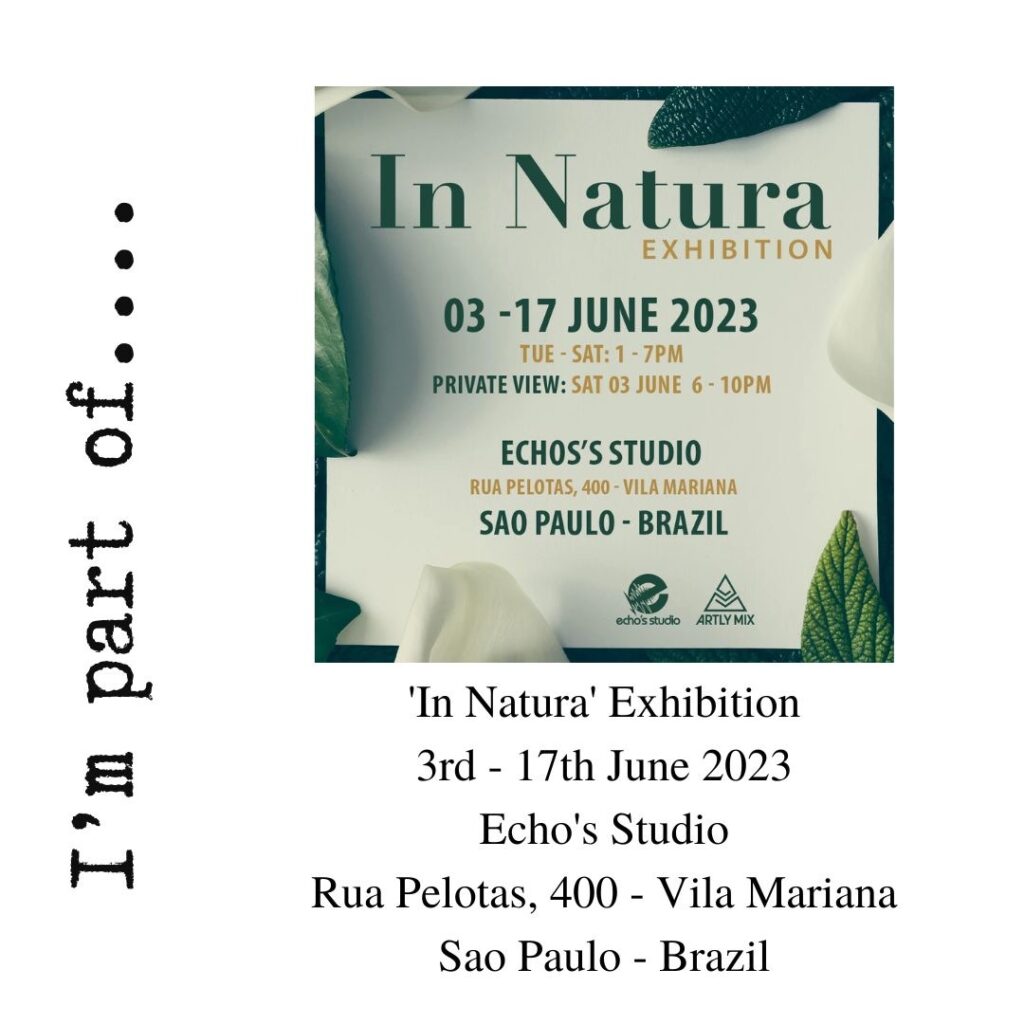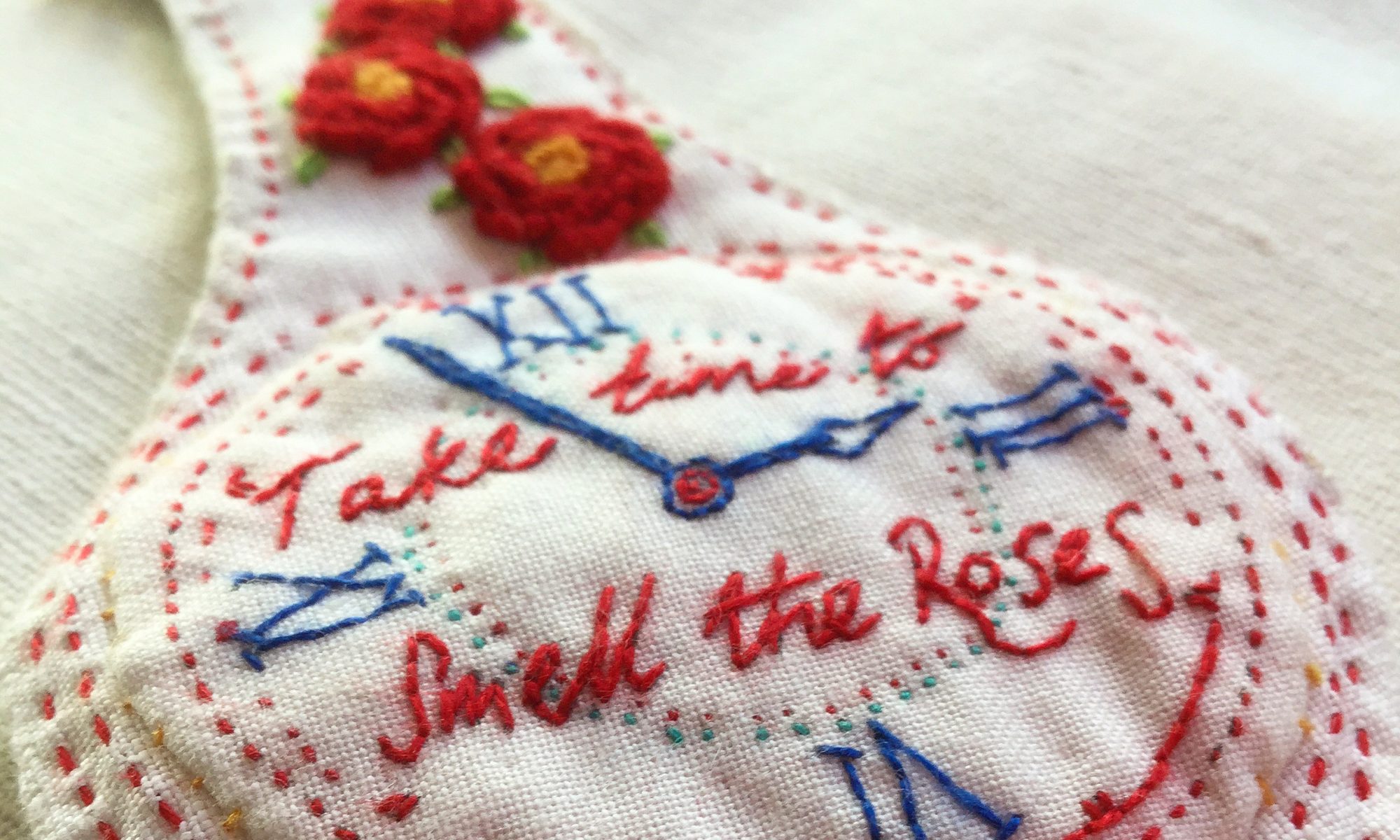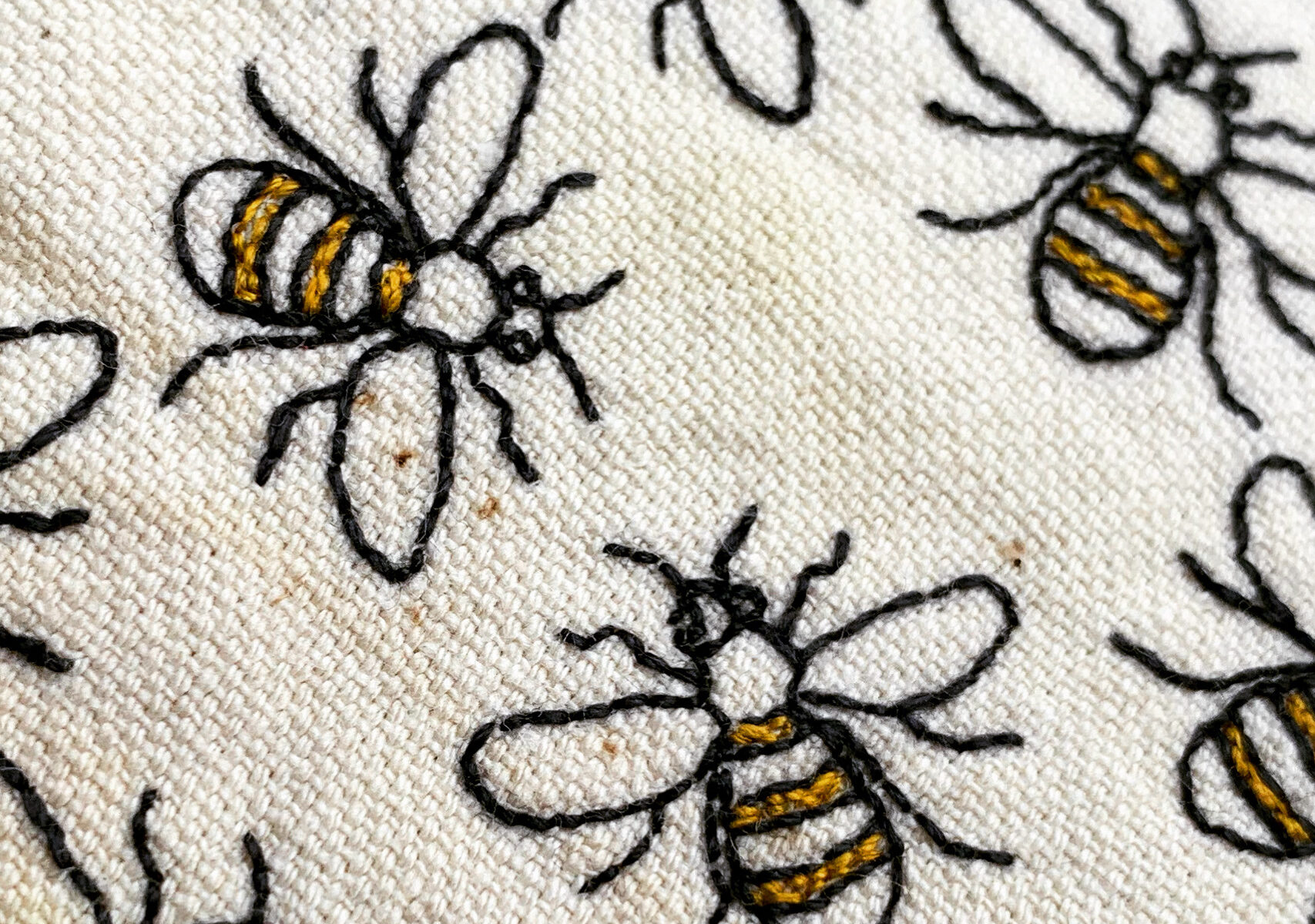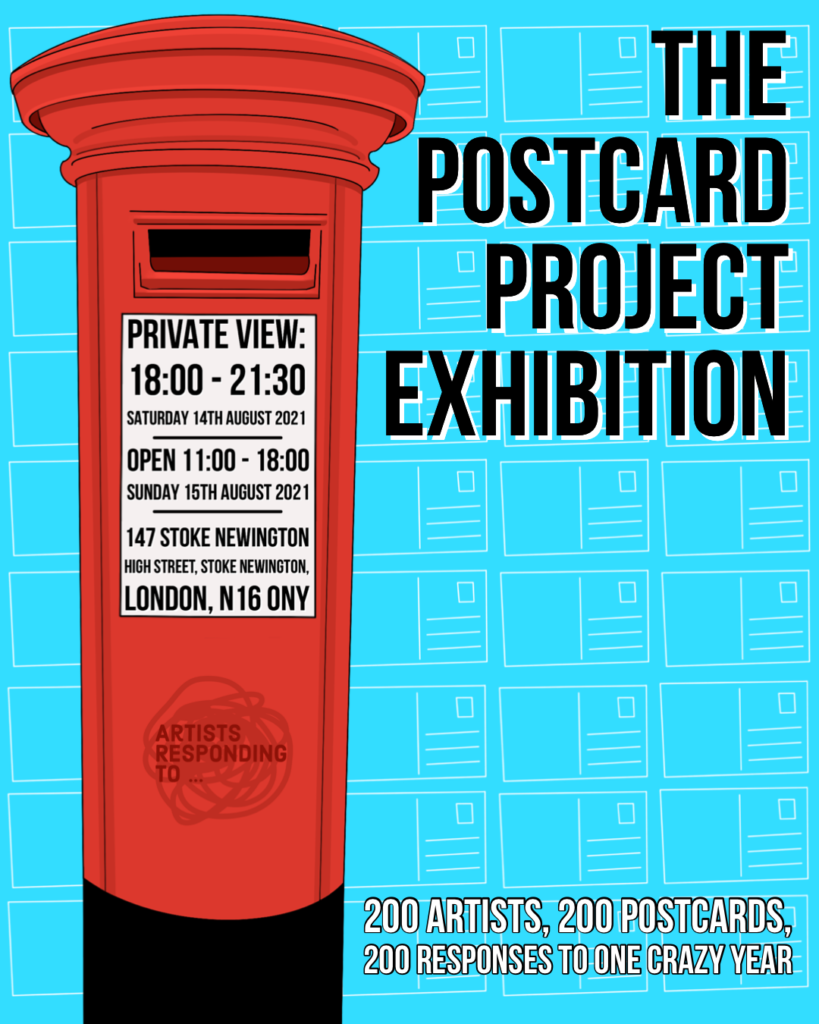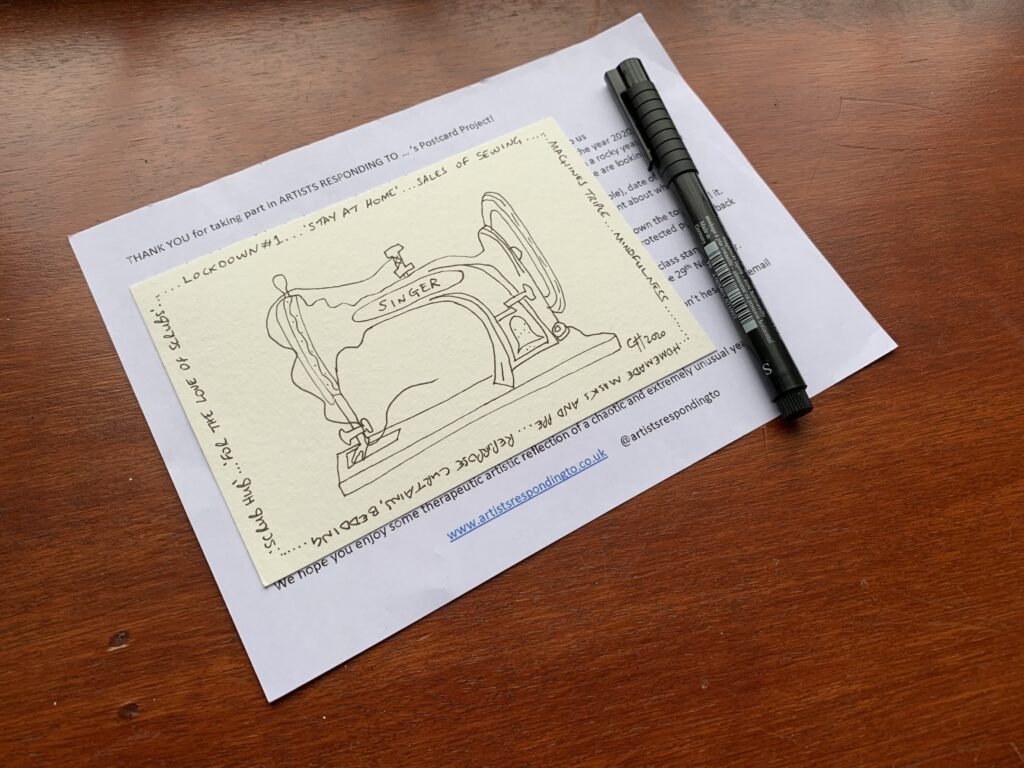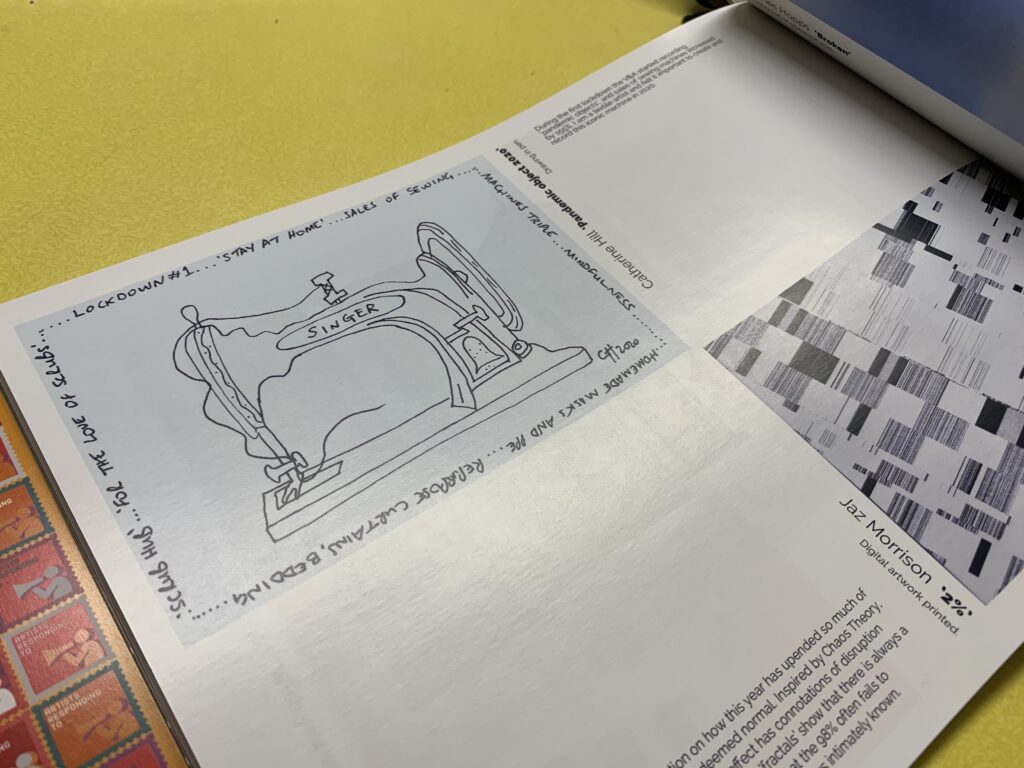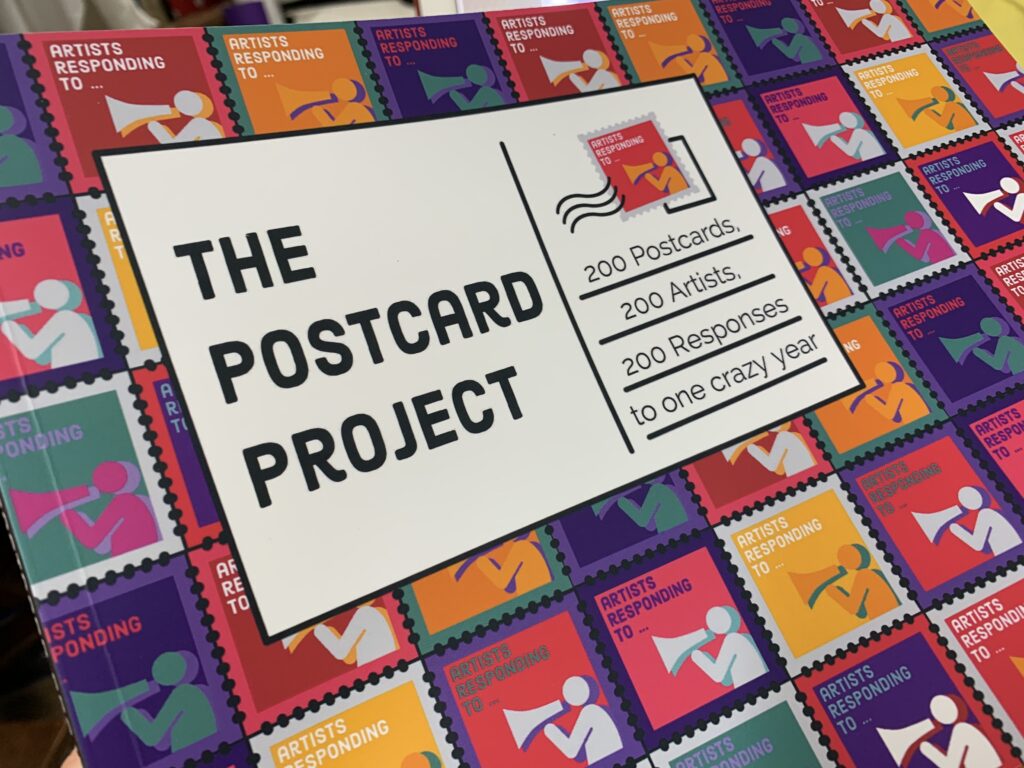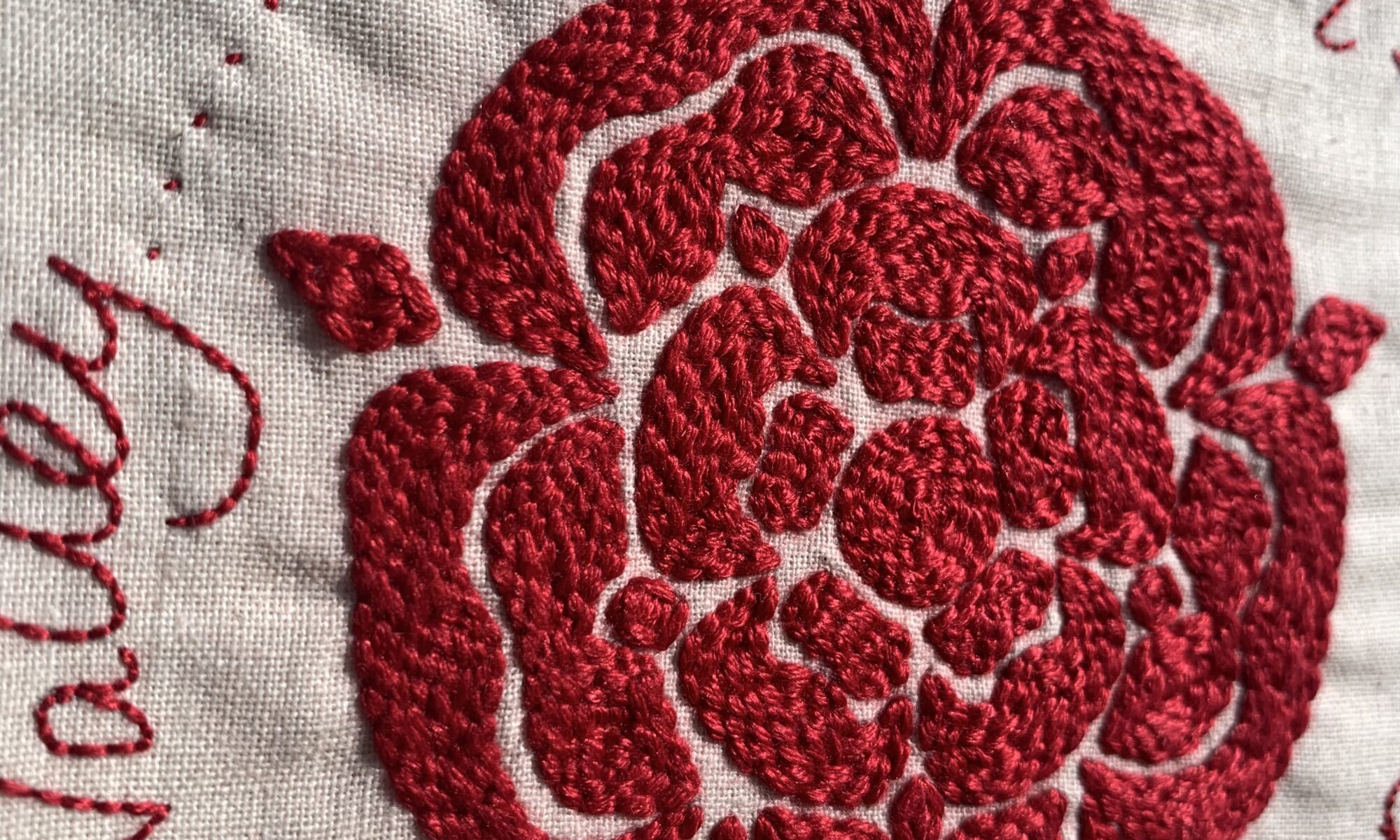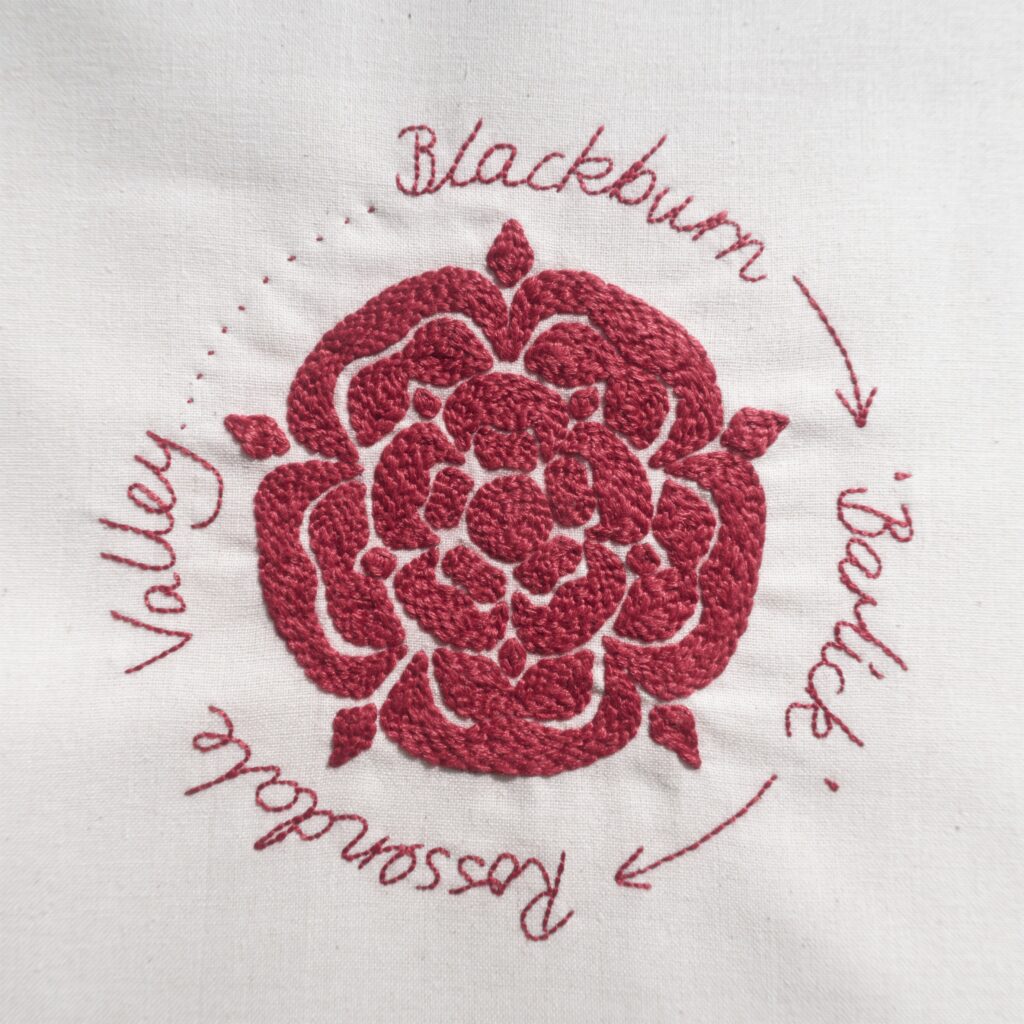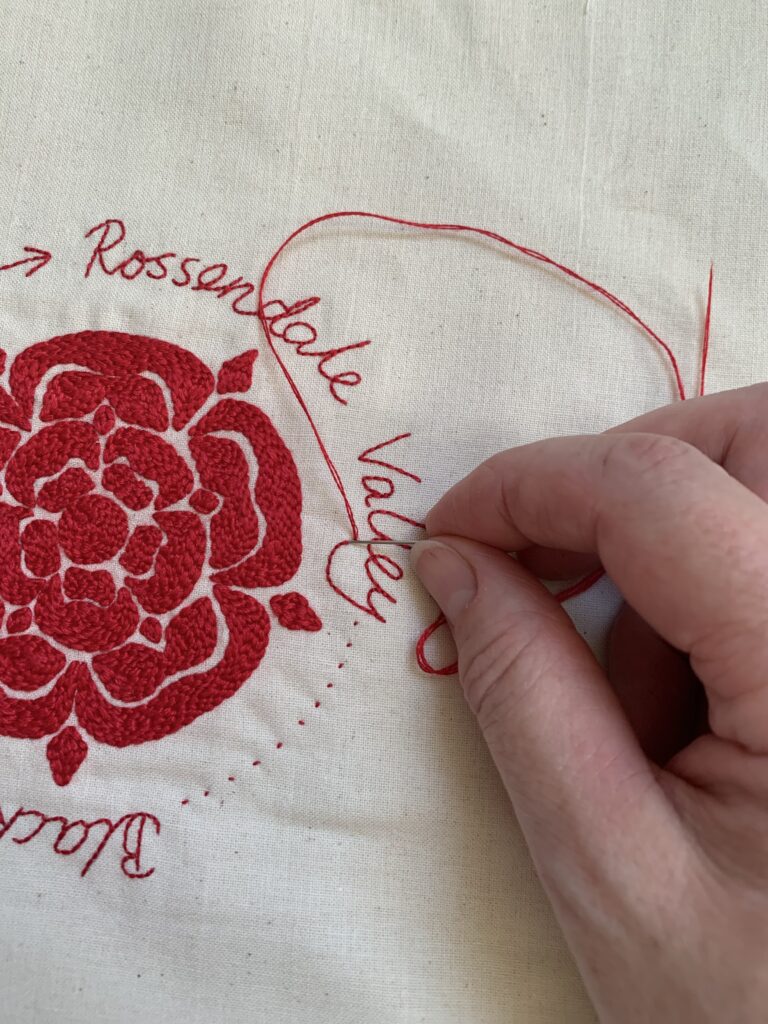One of the many things I have rediscovered in the past year is my love of books and in particular reading Lancashire dialect poetry. This new piece of work titled Worker Bees was designed after reading one of these poems.
A little about ‘Worker Bees’.
The growth of cotton manufacturing during the industrial revolution changed the landscape of Northern towns forever. Workers lived in rows of terraced homes within earshot of the Mill they worked in, each long day of work starting with the call of the factory bell. By 1860 there were 2650 cotton mills in Lancashire, employing more than 440 000 people and producing half of the World’s cotton.
The outer border of the piece features an excerpt from a poem by Lancashire Dialect poet W. M. Billington – first published in The Blackburn Times in July 1864. The poem tells the tale of a chap who overslept and was abruptly awoken by the sound of the factory bells.
The central panel of worker bees has been symbolic of Manchester’s historic textile industry since 1842.
In the 1800’s Manchester was full of cotton mills and hundreds of hard-working people went to work in these buildings. The mills came to be described as ‘hives of activity’ because they were so busy, and the employees were likened to worker bees as they put so much effort into their jobs.
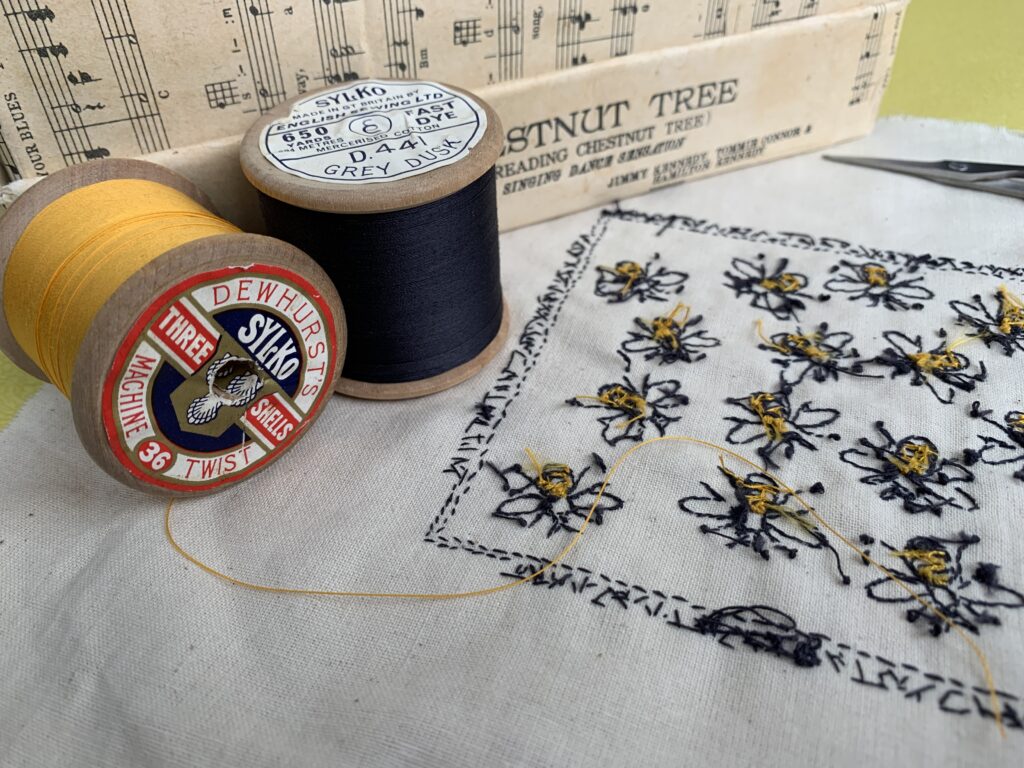
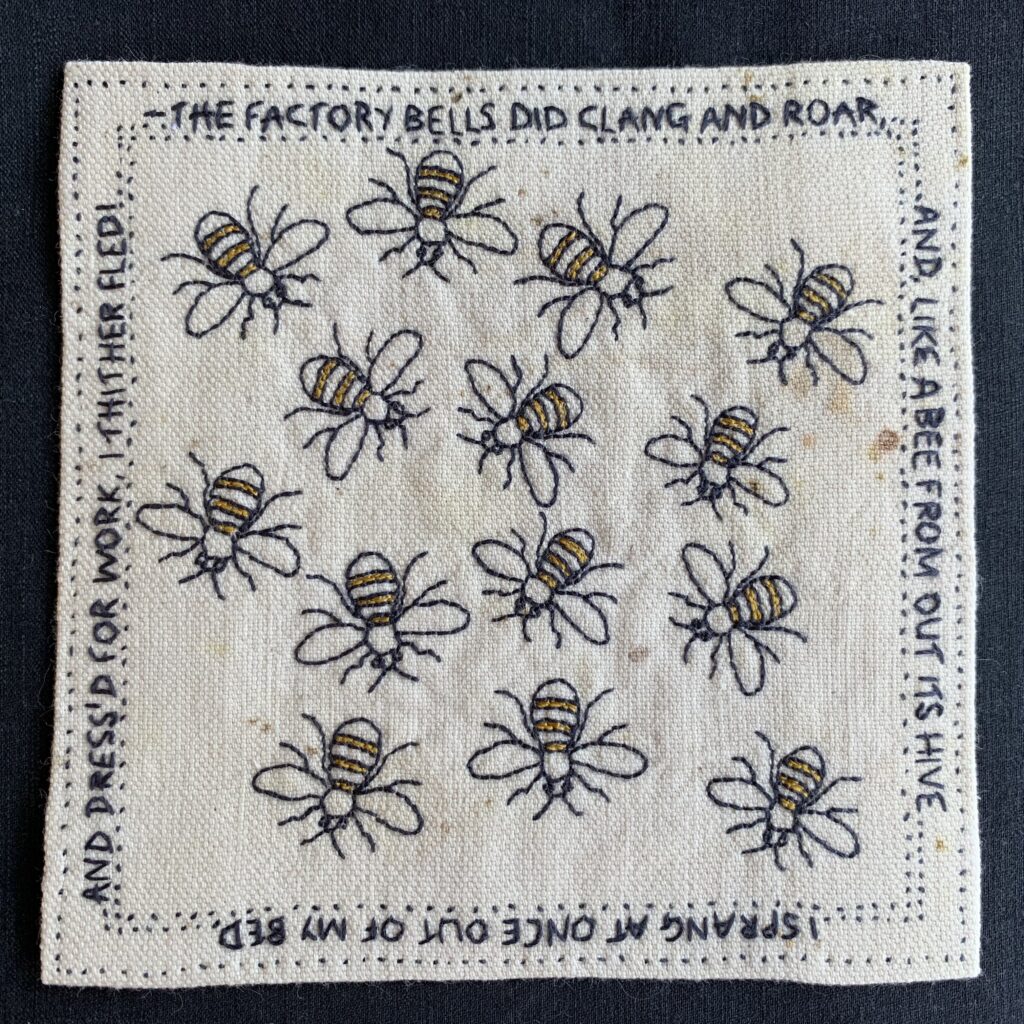
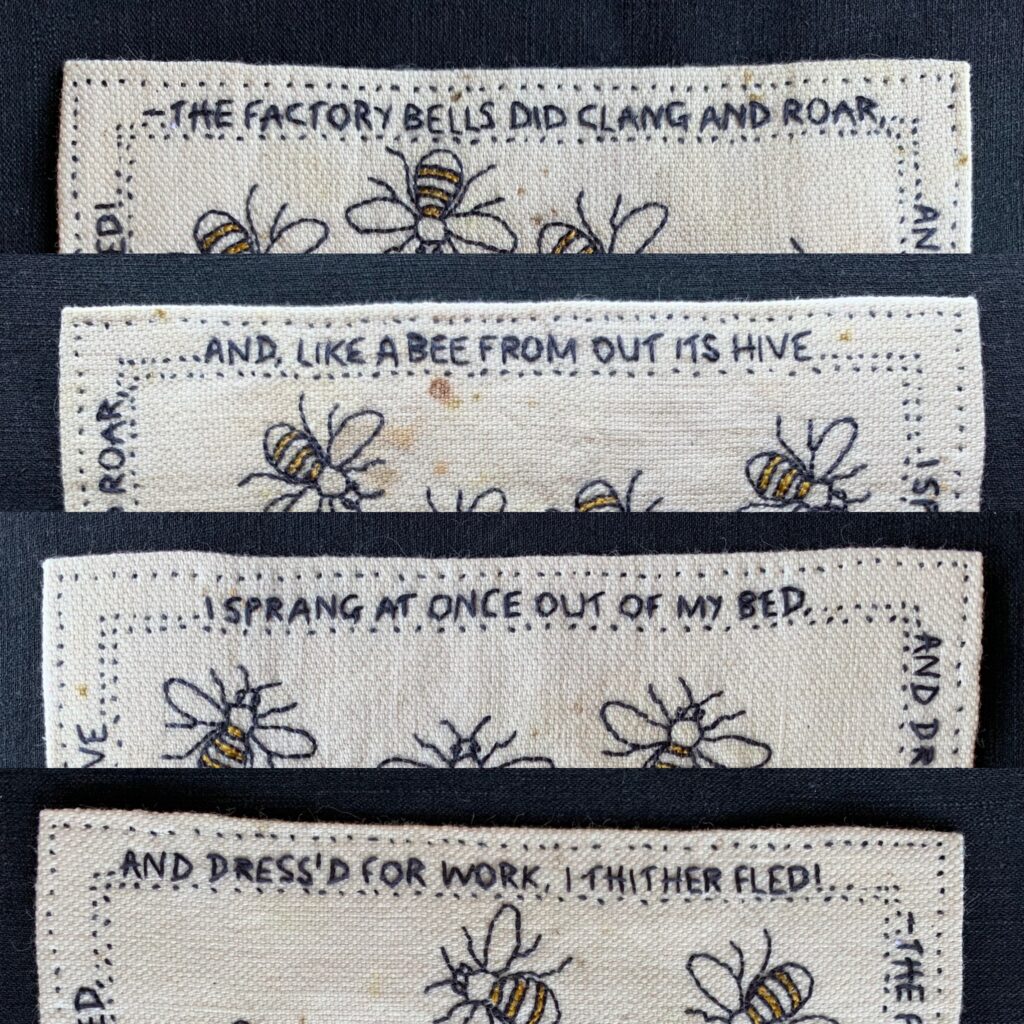
This piece is a nod to James and Jane Nixon, my ancestors who worked as weavers in the Mills in Blackburn at the time this poem was written.
Worker Bees is part of a body of work about my Lancashire roots.
Size 11.75 x 11.75 cm. Hand embroidered and hand stitched using vintage Sylko threads onto cotton cloth which has been eco rust printed.
Update
Worker Bees are off on exhibition with Swiss Fibre Art in Germany and Switzerland.
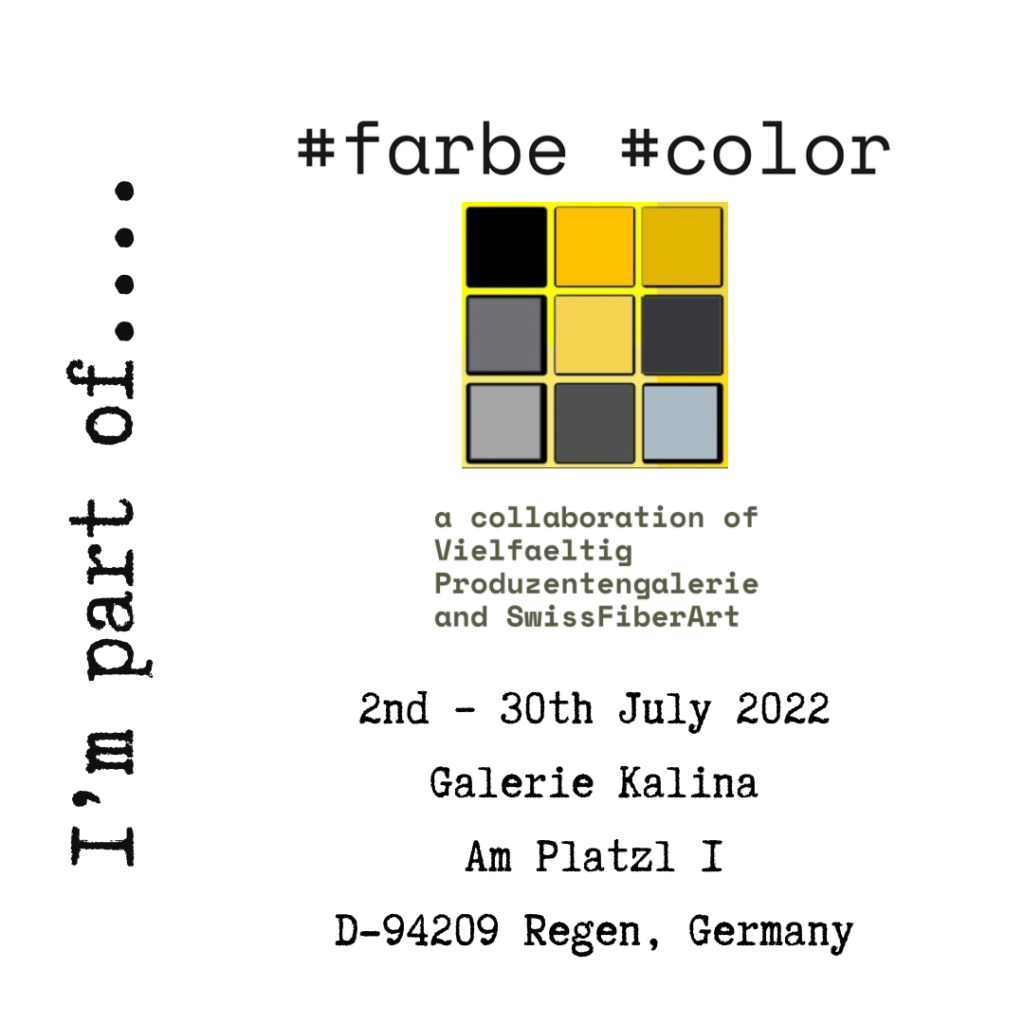
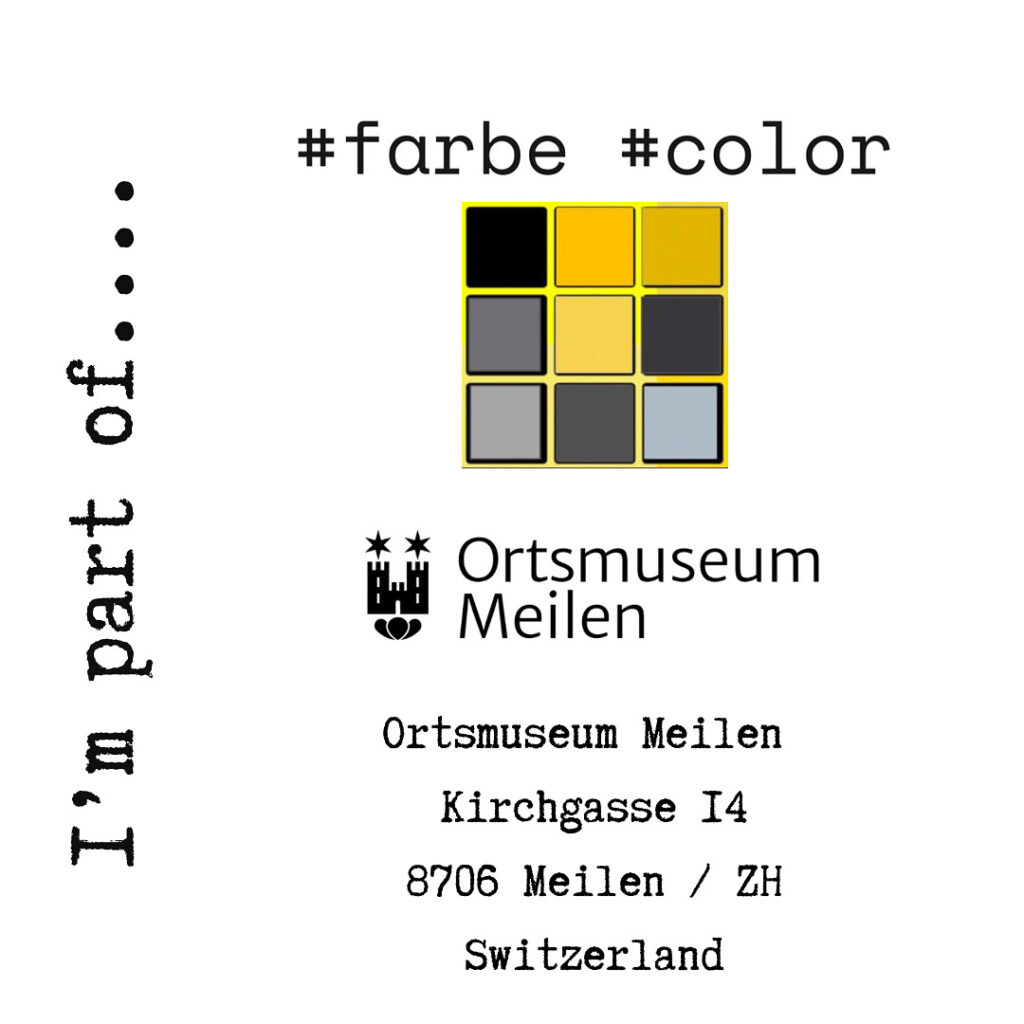
Update
Worker Bees have been invited to take part in ‘A Tall Order’ at Touchstones Rochdale.
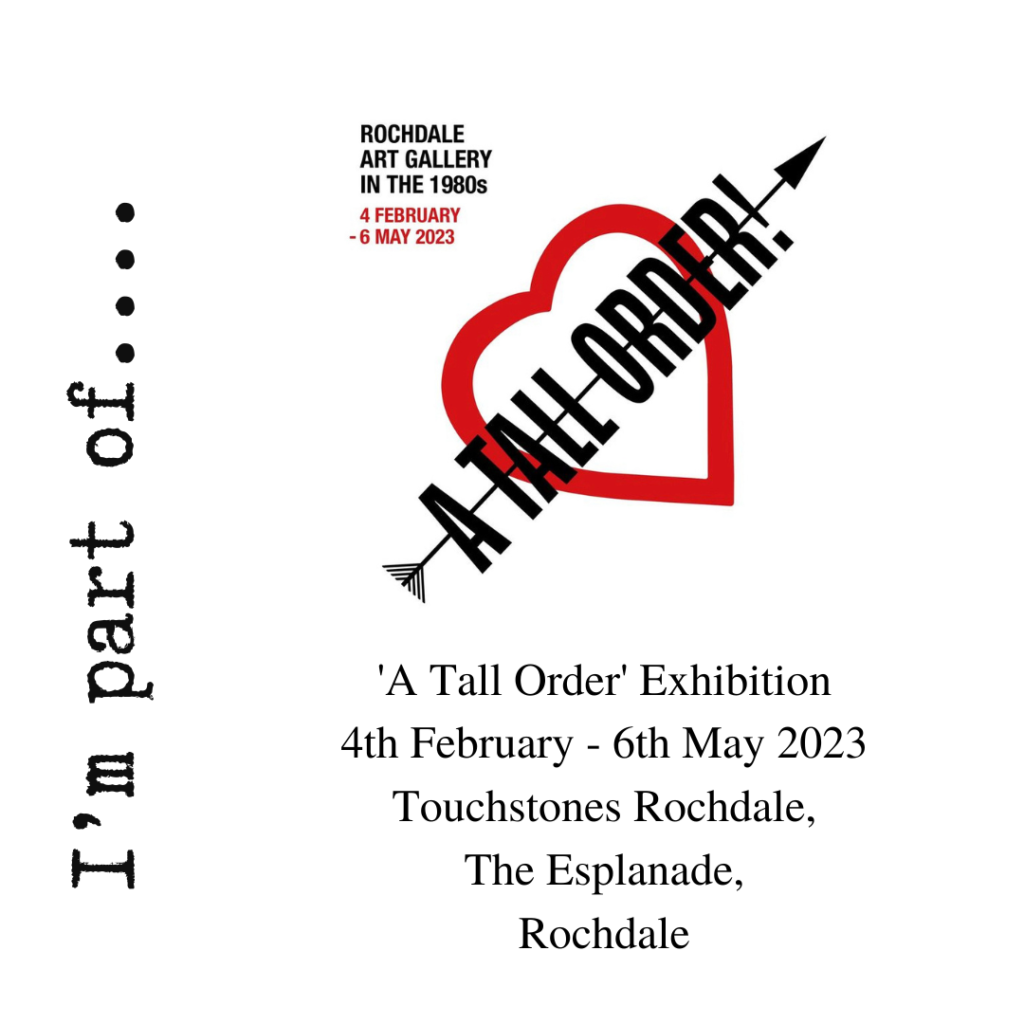
Update
Worker Bees have been accepted for exhibition in Brazil!
‘In Natura‘ is a captivating group art show that delves into the profound beauty and fragile interconnection between humanity and the natural world. As a celebration of the World Environment Day (5 June 2023), the exhibition serves as a powerful platform to raise awareness about pressing environmental issues and promote positive action.
By bringing together 23 artists from 13 different countries, ‘In Natura’ presents a diverse range of perspectives and artistic expressions that transcend borders and cultures. Established and emerging artists are showcased side by side, fostering a vibrant dialogue that illuminates the urgent need for global collaboration in addressing environmental challenges and envisions a future where humans and nature exist in harmonious balance.
Artly Mix
